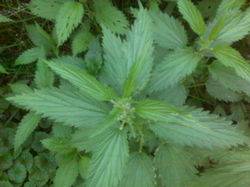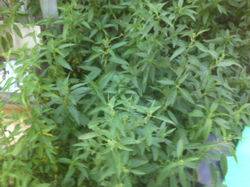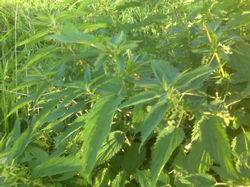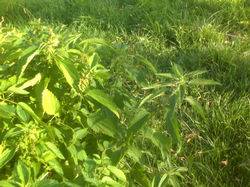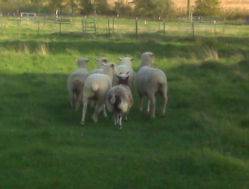BakedBeans
Member
http://www.greenchronicle.com/gardening/nettles.htm
Nettles can be annoying in the garden and the gardener’s first reaction is to try to get rid of them. However a patch of nettles is really a very useful thing to have in the corner of the garden.
There are two types of nettle, Urtica urens, the small nettle, which is an annual plant and Urtica dioica, which is a bigger plant and a perennial.
Both of these can be used to make a liquid manure. Gather the nettles in the spring and pack into a bucket or other suitable container. To 2lb of nettles add about 1 gallon of water. Leave for 2 to 3 weeks. Stir occasionally. After the 2 to 3 week period strain the liquid from the nettles (which can now be put on the compost heap). Before using, dilute the nettle fertiliser to the strength of 1 cupful of fertiliser to 10 cups of water.
Freshly cut nettles can be added to the compost heap and make an excellent activator because of their readily available nitrogen content.
Urtica dioica (the perennial nettle) will allow many pest-killing insects to overwinter in the garden and provide food and shelter for them all year round. Ladybirds, hoverflies and lacewings all benefit form a patch of nettles and will then deal with aphids all summer.
Darren
----
http://www.abc.net.au/gardening/stories/s948346.htm
Stinging Nettle Tonic: This plant is high in nitrogen so it promotes good leafy growth. Roughly chop up 1.5 kgs of stinging nettle and then add 4.5 litres of water. In a week or so this mixture will have started to ferment. The liquid can then be used diluted or undiluted as a foliar spray.
----
http://www.frenchgardening.com/tech.tmpl?SKU=309088884143
I was wondering about this myself. I found a little on it on the net and in reading 'Gardening for Life' by Maria Thun. I've added a small sample below.
From www.frenchgardening.com:
In France, bodies of serious research exist supporting the various benefits of applying nettle tea to your plants. Much as is the case for kelp emulsion, nettle tea seems to stimulate the 'immune system' of plants, making them more resistant to insect and disease attacks. Perhaps this effect is due to no more than the fact that the plant is in a state of optimal and balanced nutrition. (More on the site)
From:http://www.suite101.com/article.cfm/organic/44253
Liquid manures and herbal teas are complementary in BD. Make liquid manures by fermenting an assortment of herb plants jointly with fish or seaweed extracts. Make herbal teas from only one fermented herb plant. Many reasons necessitate using these fermented products. Biological and dynamic processes in the garden include soluble nutrients, aids plant growth and disease prevention, supports earthly and cosmic forces.
Liquid extracts also aid the microbial life in the soil, roots (rhizosphere) and leaves (phyllosphere). Liquid manure and herbal teas aid the phyllosphere as cover crops aid the rhizosphere. Beneficial microbes aid in competing against disease-causing microbes. Biological extract's foliage sprayed may cause an entire plant response called induced resistance.
Uses from Thun: nettles can be used to counteract pests (larval and caterpillar infestation) and to stimulate growth. etc.
-----
bb
Nettles can be annoying in the garden and the gardener’s first reaction is to try to get rid of them. However a patch of nettles is really a very useful thing to have in the corner of the garden.
There are two types of nettle, Urtica urens, the small nettle, which is an annual plant and Urtica dioica, which is a bigger plant and a perennial.
Both of these can be used to make a liquid manure. Gather the nettles in the spring and pack into a bucket or other suitable container. To 2lb of nettles add about 1 gallon of water. Leave for 2 to 3 weeks. Stir occasionally. After the 2 to 3 week period strain the liquid from the nettles (which can now be put on the compost heap). Before using, dilute the nettle fertiliser to the strength of 1 cupful of fertiliser to 10 cups of water.
Freshly cut nettles can be added to the compost heap and make an excellent activator because of their readily available nitrogen content.
Urtica dioica (the perennial nettle) will allow many pest-killing insects to overwinter in the garden and provide food and shelter for them all year round. Ladybirds, hoverflies and lacewings all benefit form a patch of nettles and will then deal with aphids all summer.
Darren
----
http://www.abc.net.au/gardening/stories/s948346.htm
Stinging Nettle Tonic: This plant is high in nitrogen so it promotes good leafy growth. Roughly chop up 1.5 kgs of stinging nettle and then add 4.5 litres of water. In a week or so this mixture will have started to ferment. The liquid can then be used diluted or undiluted as a foliar spray.
----
http://www.frenchgardening.com/tech.tmpl?SKU=309088884143
I was wondering about this myself. I found a little on it on the net and in reading 'Gardening for Life' by Maria Thun. I've added a small sample below.
From www.frenchgardening.com:
In France, bodies of serious research exist supporting the various benefits of applying nettle tea to your plants. Much as is the case for kelp emulsion, nettle tea seems to stimulate the 'immune system' of plants, making them more resistant to insect and disease attacks. Perhaps this effect is due to no more than the fact that the plant is in a state of optimal and balanced nutrition. (More on the site)
From:http://www.suite101.com/article.cfm/organic/44253
Liquid manures and herbal teas are complementary in BD. Make liquid manures by fermenting an assortment of herb plants jointly with fish or seaweed extracts. Make herbal teas from only one fermented herb plant. Many reasons necessitate using these fermented products. Biological and dynamic processes in the garden include soluble nutrients, aids plant growth and disease prevention, supports earthly and cosmic forces.
Liquid extracts also aid the microbial life in the soil, roots (rhizosphere) and leaves (phyllosphere). Liquid manure and herbal teas aid the phyllosphere as cover crops aid the rhizosphere. Beneficial microbes aid in competing against disease-causing microbes. Biological extract's foliage sprayed may cause an entire plant response called induced resistance.
Uses from Thun: nettles can be used to counteract pests (larval and caterpillar infestation) and to stimulate growth. etc.
-----
bb


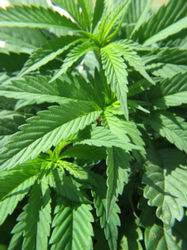
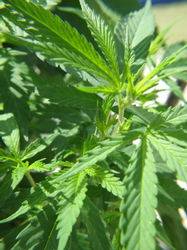
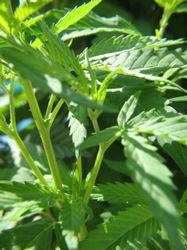
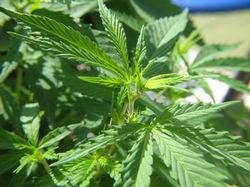
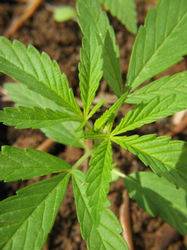
 ... if anyone else has had success cultivating these herbs let me know, I'd love to hear more on this subject.
... if anyone else has had success cultivating these herbs let me know, I'd love to hear more on this subject. 
